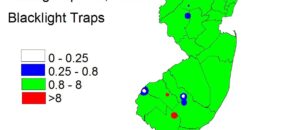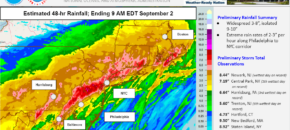
Sweet Corn Note: IPM technicians returning to their studies, as well as adverse weather have caused temporary gaps in data collection. This is particularly true in the counties of Hunterdon, Middlesex and Somerset. Please read the associated text below carefully for interpretation of the maps. Corn earworm (CEW) moth captures from both trap types remain […]
Continue reading...
